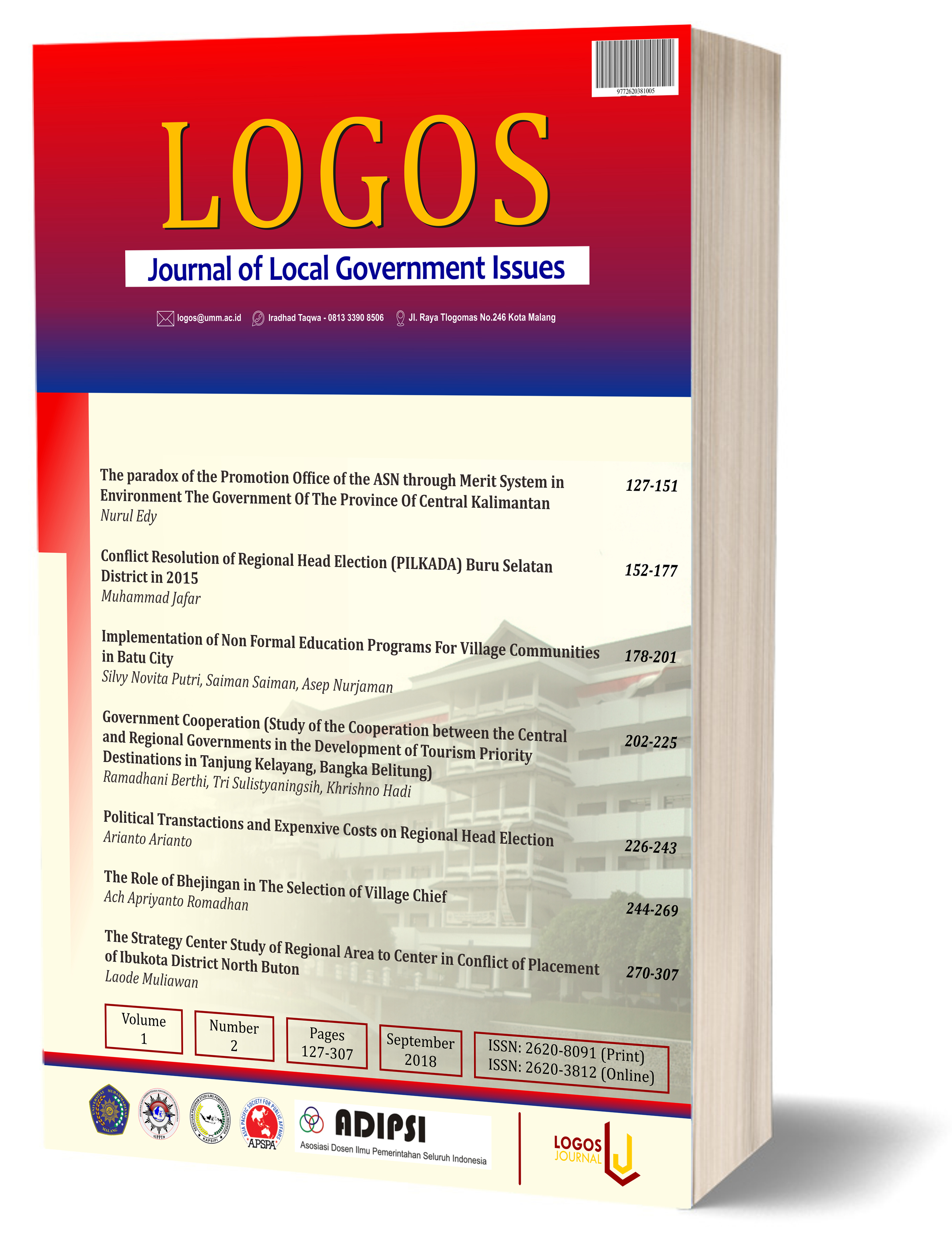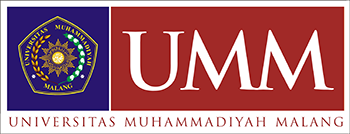Government Cooperation (Study of the Cooperation between the Central and Regional Governments in the Development of Tourism Priority Destinations in Tanjung Kelayang, Bangka Belitung)
DOI:
https://doi.org/10.22219/logos.Vol1.No2.202-225Abstract
In order to improve and develop the priority sector, namely the tourism sector, 10 (ten) priority destinations are determined in Indonesia, one of them is Tanjung Kelayang Destination in Bangka Belitung. The development of this priority destination, being the domain of authority of the central government and regional governments, it is necessary for Government Cooperation. The results of the study found that the model of cooperation between the central and regional governments in the development of Tanjung Kelayang Destinations was not only developed through government cooperation in the status of KSPN (National Tourism Strategic Area) which was deconcentrated, but also developed through government cooperation in the status of KEK (Creative Economic Zone) in the concept ABCGM (Academics, Business, Community, Government, Media). In each model of cooperation in its implementation there are still some problems, namely the local government is less able to take advantage of the opportunities in proposing activities to the central government through the Deconcentration Fund and DAK (Special Allocation Funds) in the KSPN status, and there are some activities that are not focused and not suitable for the development of KEK Tanjung Kelayang. There are several inhibiting and supporting factors identified and influencing government cooperation, inhibiting factors in the development of Tanjung Kelayang Priority Destinations namely lack of accessibility especially transportation, lack of awareness of community tourism, lack of community creativity while supporting factors are many foreign tourists and there are famous tourist attractions (Laskar Pelangi Island). Thus, the Central and Regional Government Cooperation can conclude that it is still not enough to make the Tanjung Kelayang destination a priority destination in Indonesia.
Keywords :Government Cooperation, Tourism Development, Priority Destinations
Downloads
References
Antariksa, B. (2015). Kebijakan pembangunan kepariwisataan: pengembangan kepariwisataan yang berkelanjutan dan perlindungan kekayaan intelektual: Intrans Publishing.
Antwi-Boasiako, K. B. (2010). Public administration: Local government and decentralization in Ghana. Journal of African Studies and development, 2(7), 166-175.
Crook, R. C., Crook, R. C., & Manor, J. (1998). Democracy and decentralisation in South Asia and West Africa: Participation, accountability and performance: Cambridge University Press.
d'Hotman de Villiers, J. (2015). The perception, knowledge and utilisation of research and its role in the chiropractic profession as determined by chiropractors attending the World Federation of Chiropractic biennial conference 2013.
Dubois, H. F., & Fattore, G. (2009). Definitions and typologies in public administration research: the case of decentralization. Intl Journal of Public Administration, 32(8), 704-727.
Hartanti, E. (2010). Dekonsentrasi di Indonesia. Jurnal Alokasi Dana. FE, UI, 36-63.
Hidayat, S. (2008). Desentralisasi Dan Otonomi Daerah Dalam Perspektif State-Society Relation. Jurnal Poelitik, 1(1).
Kaho, J. R., Bayo, L. N., Parlindungan, U., & Jamson, U. N. E. (2012). Analisis hubungan pemerintah pusat dan daerah di Indonesia: Center for Politics and Government (PolGov), Fisipol UGM.
Kristiana, I., McDonald, S., Tan, J., Joll, C., & Heitz, A. (2015). Analysis of halogen-specific TOX revisited: method improvement and application. Talanta, 139, 104-110.
Larson, R. (2000). Temporal modification in nominals. Handout of paper presented at the International Round Table “The Syntax of Tense and Aspect” Paris, France.
Moerwanto, A. S. (2017). Temporal Lag Effects of Alluvial System Under Unsteady Flow Conditions. Jurnal Teknik Hidraulik, 1(1), 1-16.
Muljadi, A. (2009). Kepariwisataan dan perjalanan: Rajawali Press.
Nirwandar, S. (2007). Pembangunan Sektor Pariwisata di Era Otonomi Daerah. Diakses pada, 24.
Ramadhani, B., Sulistyaningsih, T., & Hadi, K. (2018). Government Cooperation: Kerjasama Pemerintah Pusat Dan Daerah Dalam Pengembangan Destinasi Prioritas Pariwisata Di Tanjung Kelayang, Bangka Belitung. LOGOS (Journal of Local Government Issues).
Ratman, N. (1976). Geological map of the Tolitoli quadrangle, North Sulawesi, Scale 1: 250 000 (Quadrangles 2016-2117-2117). Geological Survey of Indonesia.
Rondinelli, D., & Vastag, G. (2000). Panacea, common sense, or just a label?: The value of ISO 14001 environmental management systems. European Management Journal, 18(5), 499-510.
Saiman, L., Maykowski, P., Murray, M., Cohen, B., Neu, N., Jia, H., . . . Alba, L. (2017). Incidence, risks, and types of infections in pediatric long-term care facilities. JAMA pediatrics, 171(9), 872-878.
Downloads
Published
How to Cite
Issue
Section
License
Copyright (c) 2018 Ramadhani Berthi, Tri Sulistyaningsih, Khrishno Hadi

This work is licensed under a Creative Commons Attribution-ShareAlike 4.0 International License.
Authors who publish with this journal agree to the following terms:
- Authors retain copyright and grant the journal right of first publication with the work simultaneously licensed under a Creative Commons Attribution-ShareAlike 4.0 International License. that allows others to share the work with an acknowledgment of the work's authorship and initial publication in this journal.
- Authors are able to enter into separate, additional contractual arrangements for the non-exclusive distribution of the journal's published version of the work (e.g., post it to an institutional repository or publish it in a book), with an acknowledgment of its initial publication in this journal.
- Authors are permitted and encouraged to post their work online (e.g., in institutional repositories or on their website) prior to and during the submission process, as it can lead to productive exchanges, as well as earlier and greater citation of published work (See The Effect of Open Access).

This work is licensed under a Creative Commons Attribution-ShareAlike 4.0 International License.













